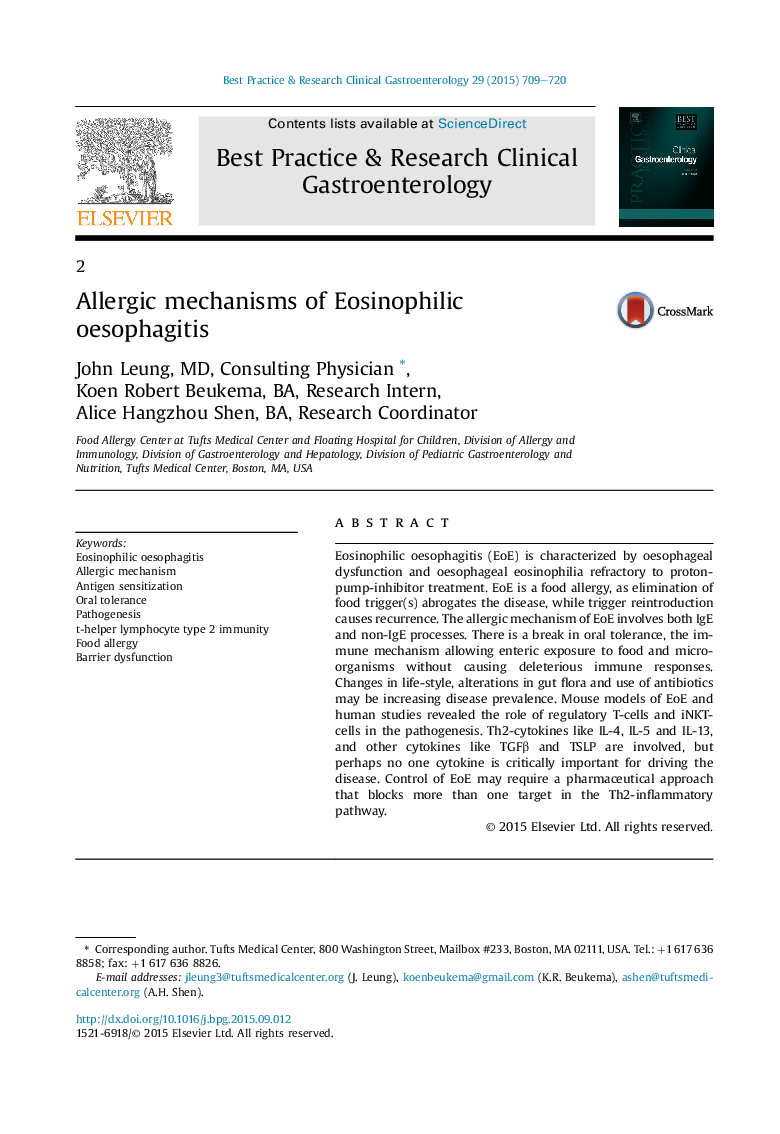| Article ID | Journal | Published Year | Pages | File Type |
|---|---|---|---|---|
| 3254050 | Best Practice & Research Clinical Gastroenterology | 2015 | 12 Pages |
Eosinophilic oesophagitis (EoE) is characterized by oesophageal dysfunction and oesophageal eosinophilia refractory to proton-pump-inhibitor treatment. EoE is a food allergy, as elimination of food trigger(s) abrogates the disease, while trigger reintroduction causes recurrence. The allergic mechanism of EoE involves both IgE and non-IgE processes. There is a break in oral tolerance, the immune mechanism allowing enteric exposure to food and micro-organisms without causing deleterious immune responses. Changes in life-style, alterations in gut flora and use of antibiotics may be increasing disease prevalence. Mouse models of EoE and human studies revealed the role of regulatory T-cells and iNKT-cells in the pathogenesis. Th2-cytokines like IL-4, IL-5 and IL-13, and other cytokines like TGFβ and TSLP are involved, but perhaps no one cytokine is critically important for driving the disease. Control of EoE may require a pharmaceutical approach that blocks more than one target in the Th2-inflammatory pathway.
